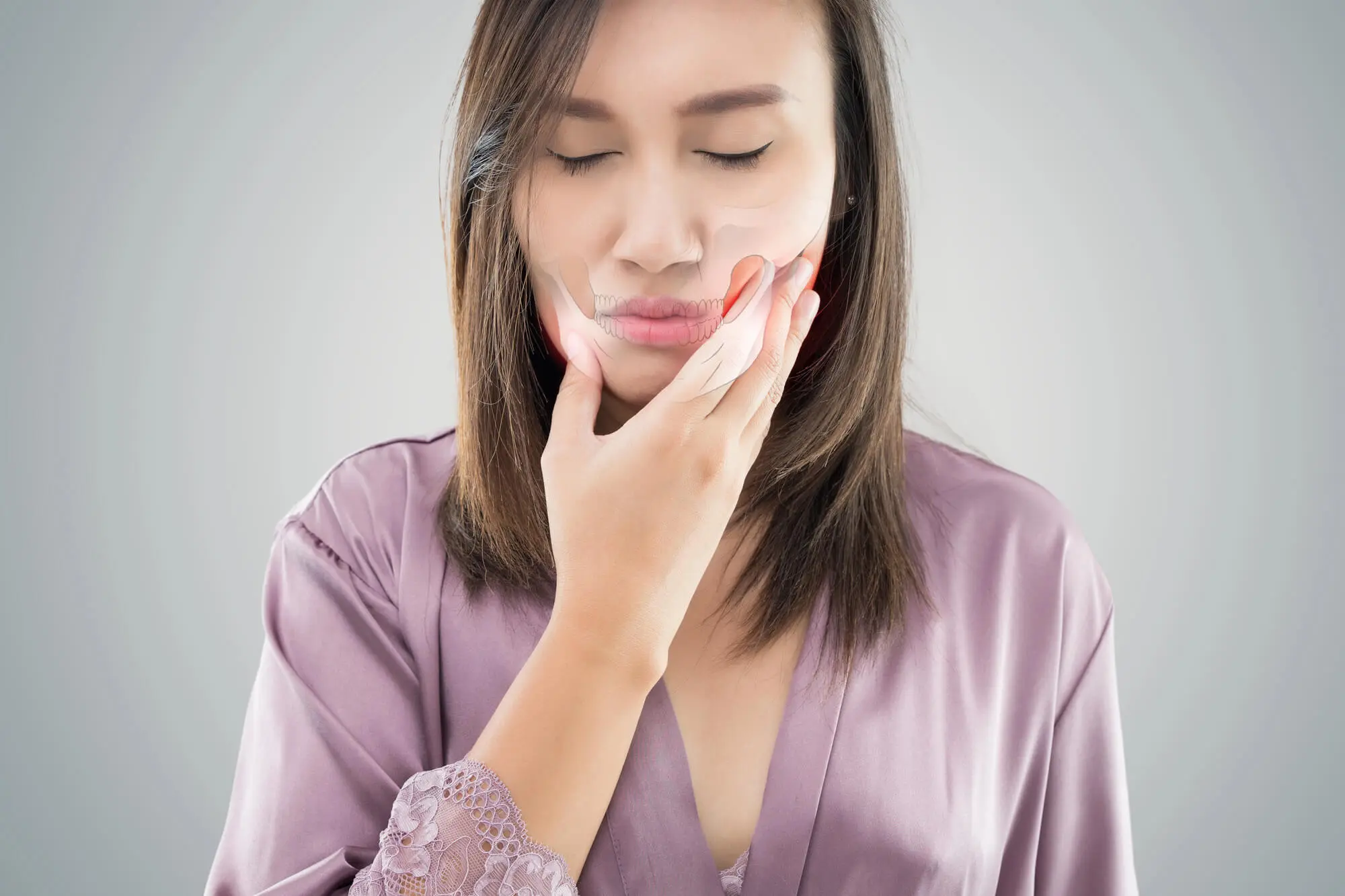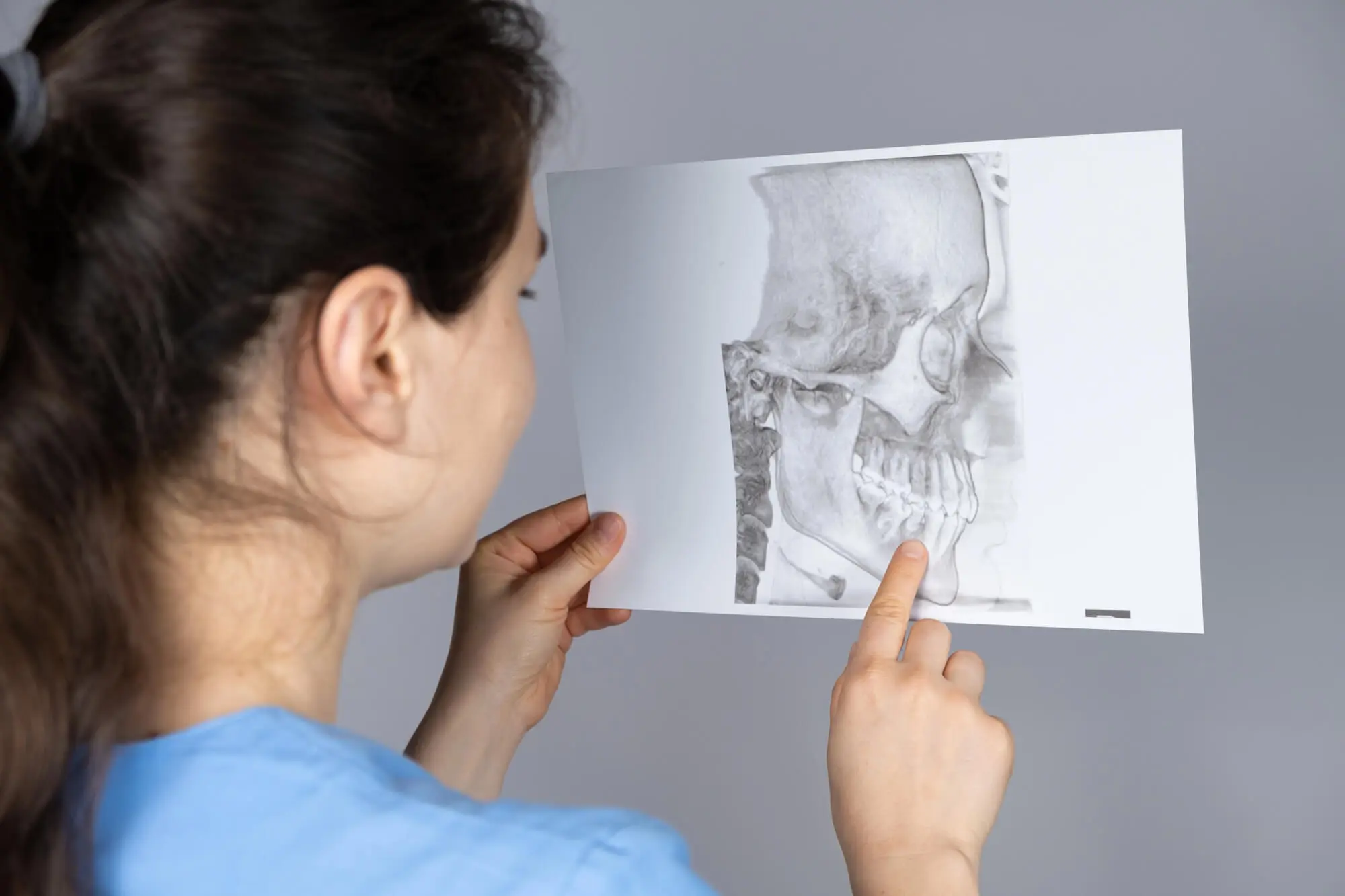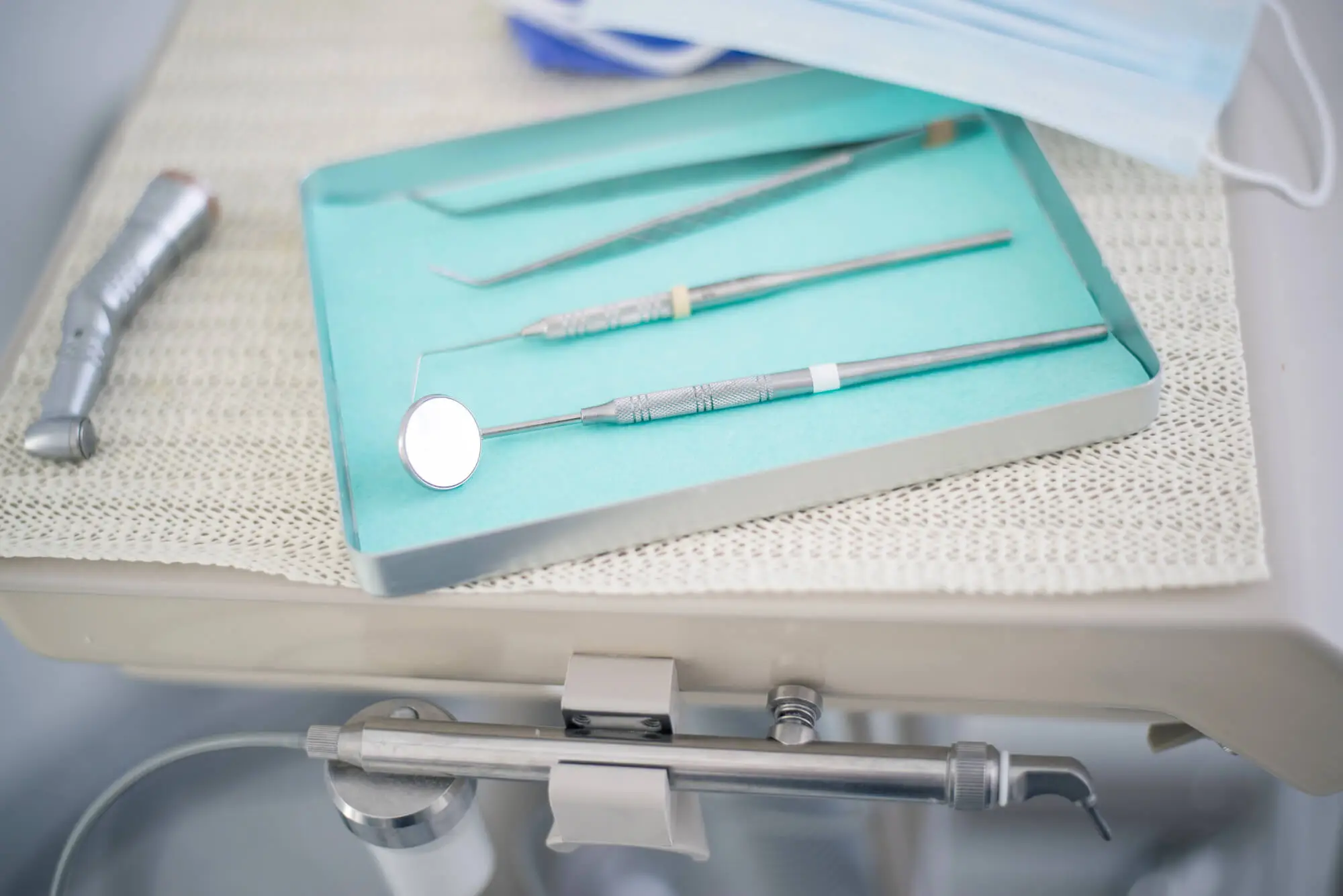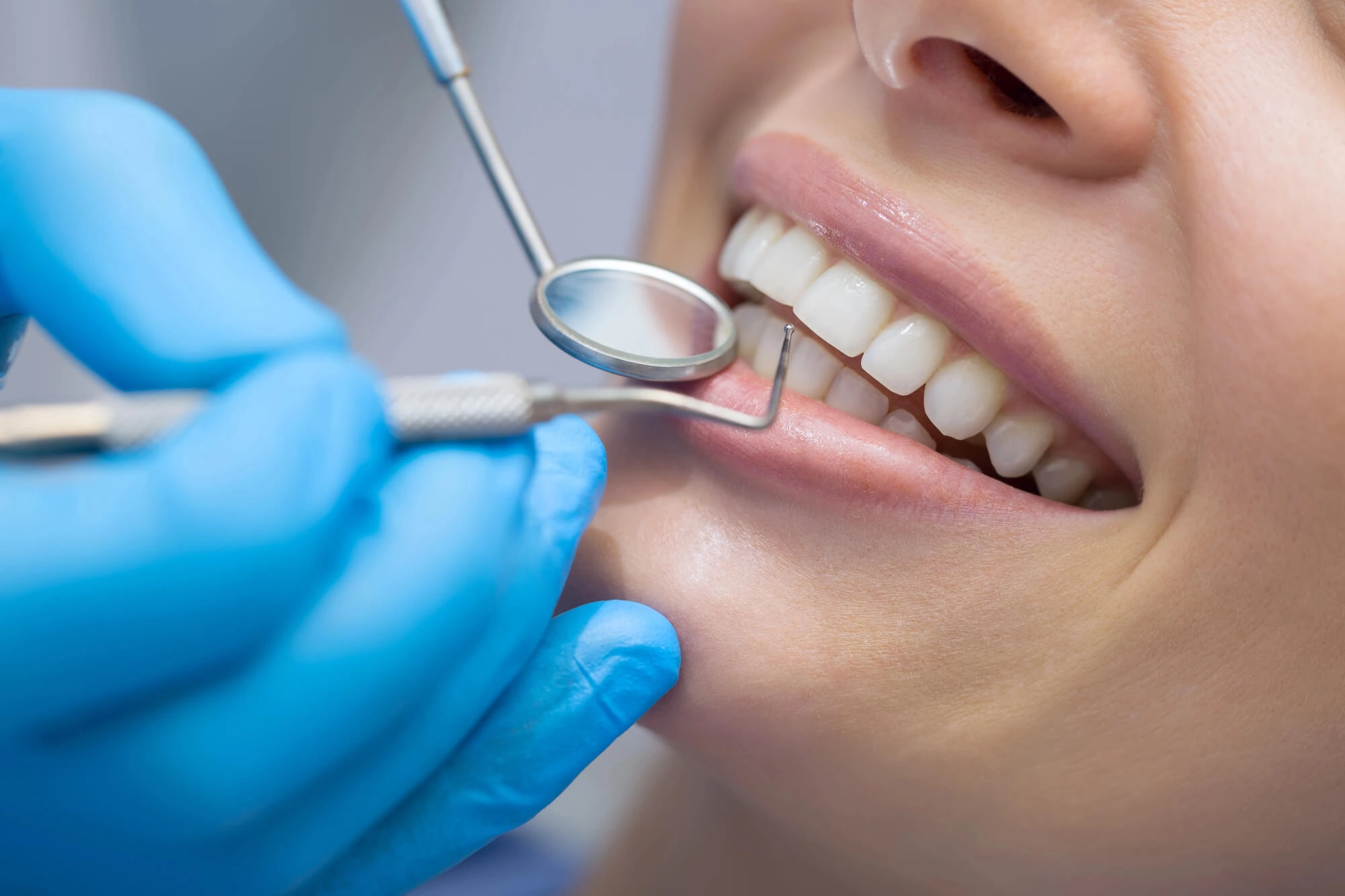
Jaw Pain When Chewing? It May Be a Sign of a TMJ Disorder
Experiencing pain, clicking, or locking in your jaw when you eat or speak is not normal: they’re all signs of TMJ disorders, a painful and severely frustrating condition. Sadly, professionals don’t know yet how to treat TMD—only how to manage its symptoms with Botox® in Birmingham.
Botox® is a well-known substance in cosmetology, but did you know it can also alleviate TMD symptoms? By understanding this disease and what causes it, you can feel ready to explore its benefits for managing TMD.

What Is TMD?
TMD is an abbreviation for temporomandibular disorders, a group of conditions characterized by pain and dysfunction in the jaw joint and the muscles that control jaw movement.
The temporomandibular joint (TMJ) is a hinge that connects your jaw to the temporal bones of your skull, located in front of each ear. It allows you to move your jaw up and down, as well as side to side, so you can talk, chew, and yawn. Because it allows all of these movements, it’s one of the most complex joints in our bodies—so it can become tense and overexerted over time
This can cause temporomandibular disorder, or TMD. Common symptoms of this condition include:
- Tenderness in your face, jaw joint area, neck, and shoulders, and in or around your ears when you chew, speak, or open your mouth wide.
- Problems with trying to open your mouth.
- Jaws that become "stuck" or "locked" in an open or closed mouth position.
- Jaw clicking, popping, or grating noises that may or may not hurt when you chew or open and close your mouth
- A tired feeling in your face
- Chewing difficulties or an abrupt, painful bite
- Facial swelling
- Toothaches, earaches, headaches, or migraines
What Causes TMD?
It’s not known yet, with precision, what causes TMD. Nonetheless, dentists think that symptoms are caused by issues with your jaw's muscles or the joint itself. For instance, TMDs may result from injuries to your jaw, joint, or head and neck muscles.
Other reasons are:
- Teeth clenching or grinding, which puts a lot of strain on the joint
- Movement of the disc or soft cushion between the joint's ball and socket
- Arthritis in the joint
- Stress, which can lead to clenching of the teeth or tightening of the jaw and face muscles.
Research also shows that women are twice as likely to have TMDs as men.

Botox® for TMD: How It Works
Known worldwide for its anti-aging properties, Botox® (botulinum toxin) has emerged in the past few years as a safe and effective alternative for managing certain TMD symptoms—particularly those caused by muscle overactivity.
Botox® is a purified form of botulinum toxin type A, a neurotoxin produced by the bacterium Clostridium botulinum. When injected in small, controlled doses, Botox® temporarily blocks nerve signals to targeted muscles. This causes the muscles to relax, reducing their ability to contract forcefully.
Limiting muscle activity helps prevent and reduce age lines. In the context of TMD, Botox® is typically injected into overactive jaw muscles, such as the masseter, temporalis, and sometimes the lateral pterygoid. These muscles are responsible for chewing and clenching and are the ones that cause pain in patients with TMD.
By weakening these muscles slightly, Botox® can help:
- Decrease jaw tension and muscle pain
- Reduce clenching and grinding
- Minimize headaches caused by muscle strain
- Prevent further damage to the temporomandibular joint
How Is the Process for Getting Botox® for TMD
The procedure is relatively quick and minimally invasive. A trained dental or medical professional injects small amounts of Botox® into specific muscle groups associated with the patient's symptoms. No anesthesia is typically needed, though a topical numbing agent may be used to reduce discomfort.
The entire session usually takes 10 to 30 minutes, and patients can resume normal activities almost immediately. The full effects of Botox® are generally felt within 3 to 7 days, with maximum relief appearing around 2 weeks after treatment.
Frequently Asked Questions About Botox® for TMD
Are you still unsure if Botox® is the right solution for you? Here are some FAQs about Botox® for TMD to help you make a decision.
How Long Do Botox® Results Last?
Results typically last 3 to 4 months, after which repeat injections may be needed for continued symptom relief.
Who Is a Good Candidate for Botox® TMD Treatment?
Botox® is most effective for patients whose TMD symptoms are primarily muscle-related, such as:
- Chronic jaw clenching or teeth grinding
- Facial pain due to muscle overuse
- Tension headaches or migraines related to TMD
It is not typically used as a first-line treatment, and it may be less effective for TMD caused by structural issues, such as joint misalignment or arthritis within the joint capsule.
Are There Any Risks to Botox® for TMD?
Botox® for TMD does come with certain side effects, which are mainly temporary, such as bruising and swelling at the injection site and temporary muscle weakness.
There are also some potential risks, such as difficulty chewing if too much toxin is used. However, working with an experienced provider significantly reduces these risks.
Are There Any Alternative Treatments?
While we do not know the cause of TMD yet, most professionals agree that stress helps exacerbate its symptoms. For that reason, stress-management techniques can help mitigate the worst aspects of TMD. Some methods include:
- Deep Breathing Exercises: Slow, diaphragmatic breathing reduces overall muscle tension, including in the jaw.
- Meditation & Mindfulness: Helps calm the nervous system and reduce jaw-clenching habits.
- Jaw Relaxation Techniques: Keep your teeth slightly apart, tongue resting on the roof of the mouth, and lips together (“lips together, teeth apart” rule).
- Massage Therapy: Gentle self-massage of jaw muscles (masseter, temples, neck) can release tightness.
- Heat Therapy: Warm compresses help soothe tense jaw and neck muscles.
- Better Sleep: Consistent sleep routines improve recovery and reduce nighttime clenching.
- Regular Exercise: Walking, swiming, or stretching reduces physical and emotional stress.
- Limit Stimulants: Cut back on caffeine and alcohol, as they can worsen bruxism (teeth grinding).
- A Healthy Diet: Choose softer foods during flare-ups to avoid jaw strain.

Botox® in Birmingham: Your Key Ally Against TMJ Disorders
Botox® is a promising treatment option for managing the muscular symptoms of TMD, especially in patients who haven’t responded well to traditional therapies. While not a cure, it offers meaningful pain relief and improved jaw function, noticeably improving your quality of life.
While there are some risks associated with this procedure, finding a qualified professional is key to mitigating them. At Lakeview Dental & Wellness, our dentists are fully licensed to safely inject Botox®. Contact us today to learn more!
Related Posts

The Differences Regular Dental Cleanings Can Make in Your Smile
Routine dental cleanings at a Lakeview dentist enhance your smile's health and appearance. Learn the key benefits of preventive care for your smile and what to expect.

Jaw Pain When Chewing? It May Be a Sign of a TMJ Disorder
If your jaw hurts every time you eat, Botox® in Birmingham can help you manage the discomfort. Here, we’ll explain why Botox® is your key ally against TMD.

How Often Should You Go to the Dentist?
Regular visits to the dentist in Birmingham, AL can prevent issues like cavities and gum disease. But what is the ideal frequency for dental checkups?

